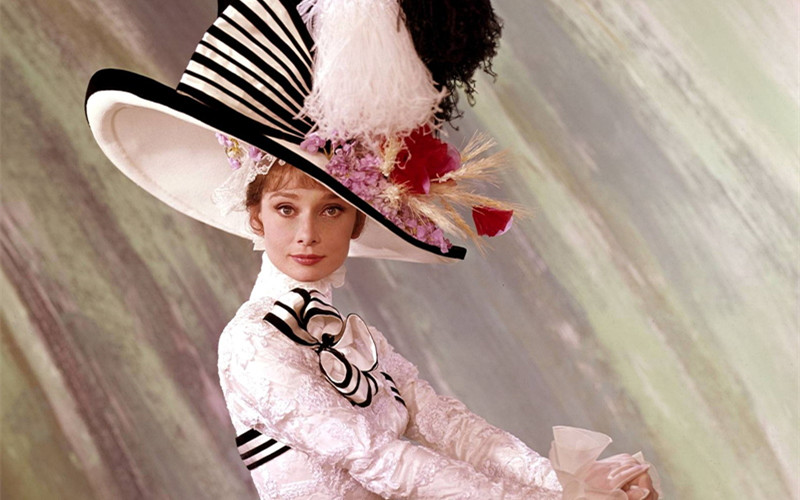
There was a time when musicals were king. They attracted massive budgets, the best directors and the biggest names of their day, whether they could sing and dance or not. After the collapse of the studio system, as audiences developed more of a taste for realism, big budget musicals began to wane. Despite the occasional film that revives the old magic (La La Land, Grease, Moulin Rouge to name a few), it’s now largely considered a dead-genre by the wider movie-going public.
Instead, people prefer to revisit the warm, comforting musical fantasies they’ve seen a thousand times before. And no matter how many times you revisit them, the greatest films in the genre manage to remain wildly enjoyable despite the passing of time. Here’s the ten greatest musicals from Hollywood’s Golden Age.
10. Seven Brides for Seven Brothers (1954)
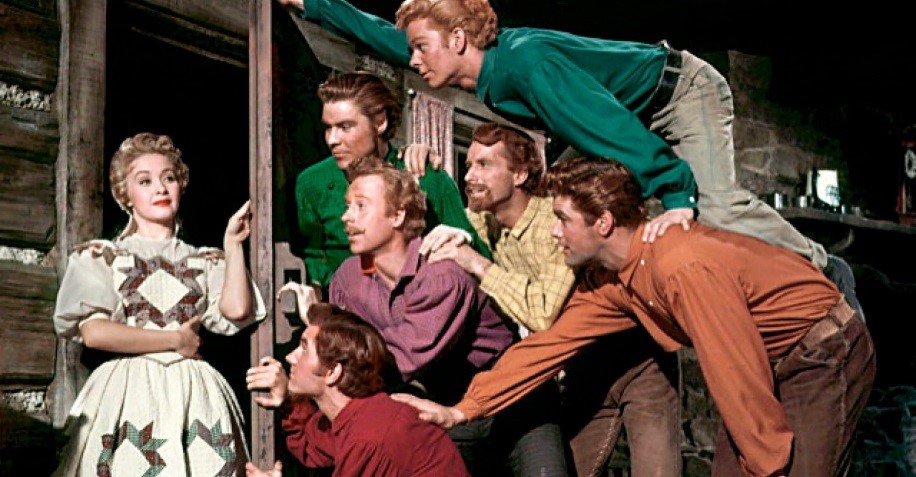
Lots of films age poorly. Of all the films on this list, and indeed of the entirety of the Golden Age, few have aged quite as poorly as Seven Brides for Seven Brothers. Taking inspiration from the Kidnapping of the Sabine Women, an ancient Roman legend about soldiers taking women from a rival territory, it’s perhaps unsurprising that such a story seems callous and chauvinistic nowadays. The combination of the film’s 1950s release date and its 1850s setting created a perfect storm for a ‘romantic’ tale that disregards any notions of progressive values regarding gender. It can be effective in moments, usually thanks to the tremendous cast, and the story is at least aware of what’s right and wrong. Still, there are some scenes that just don’t land well anymore.
And yet, to just speak about Stanley Donen’s film in such terms does a disservice to the brilliant musical cinema on display. When it comes to dancing on screen, there are few finer examples. It contains one of the best dance sequences you’re likely to see, with athleticism and skill that’s close to unrivalled. The barn dance sequence showcases the kind of athleticism, skill and control that you can barely believe you’re watching, with huge men flipping and jumping and balancing on the smallest of wooden beams. Coming right in the middle of the film, as two sets of men each try to court one of the women, the choreography is dazzlingly creative and effortlessly executed.
The film itself looks beautiful, with lush CinemaScope imagery that only the big screen could truly do justice to. Despite the obviously jarring moments in the story, it’s infectiously enjoyable, capturing the escapist magic of all great musicals. It remains an interesting lesson in judging outdated material – acknowledging what no longer holds up without diminishing the ground-breaking strides in made in the genre.
9. My Fair Lady (1964)
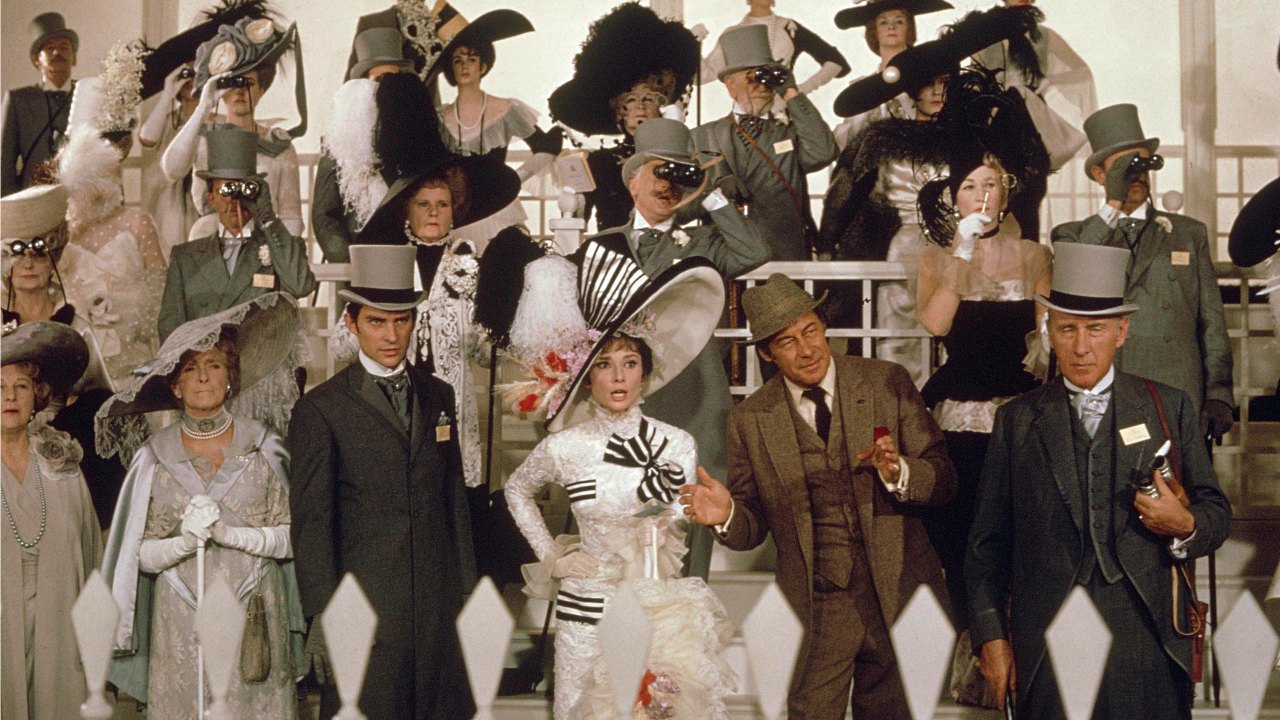
Easily the most famous film adaptation of George Bernard Shaw’s Pygmalion, My Fair Lady came towards the back end of the Golden Age musical’s run at the top of the industry standings. In a decade when the ostentatious design and star power of big studio productions was coming to an end, George Cukor’s lush musical proved to be a popular hit with contemporary audiences.
Jack Warner decided to bring what was already a proven stage success to the big screen (a recurring pathway for many of the greatest film musicals). He cast Audrey Hepburn, arguably Hollywood’s biggest female star at the time, opposite Rex Harrison, who had himself been a hit in the Broadway production. It paid off big time, taking home eight statuettes at that year’s Academy Awards, including Best Picture, Best Director for Cukor and Best Actor for Harrison.
If any film on this list stands out for its music alone, it’s My Fair Lady. There’s something within its warm melodies and easy lyrics that stays with you long after the film has finished. ‘I Could Have Danced All Night’ remains the highlight, ‘Wouldn’t It Be Loverly’ is a soothing celebration of life’s simple pleasures, and ‘On The Street Where You Live’ a charming declaration of sudden infatuation. Rex Harrison’s speak-singing is an acquired taste, but he is the best there is at the technique, and perfectly embodies the English aristocracy.
Hepburn took on the role Julie Andrews made famous on stage, dubbed by Marni Nixon for the songs. In her glistening filmography it isn’t often regarded as one of her greatest performances, although her presence alone is still enough to make any film worth watching. The opulent production design also earned acclaim, with its highly stylised image of Victorian London. It’s ostentatious and ornate, a stark contrast to Eliza Doolittle’s working-class world.
8. An American in Paris (1951)
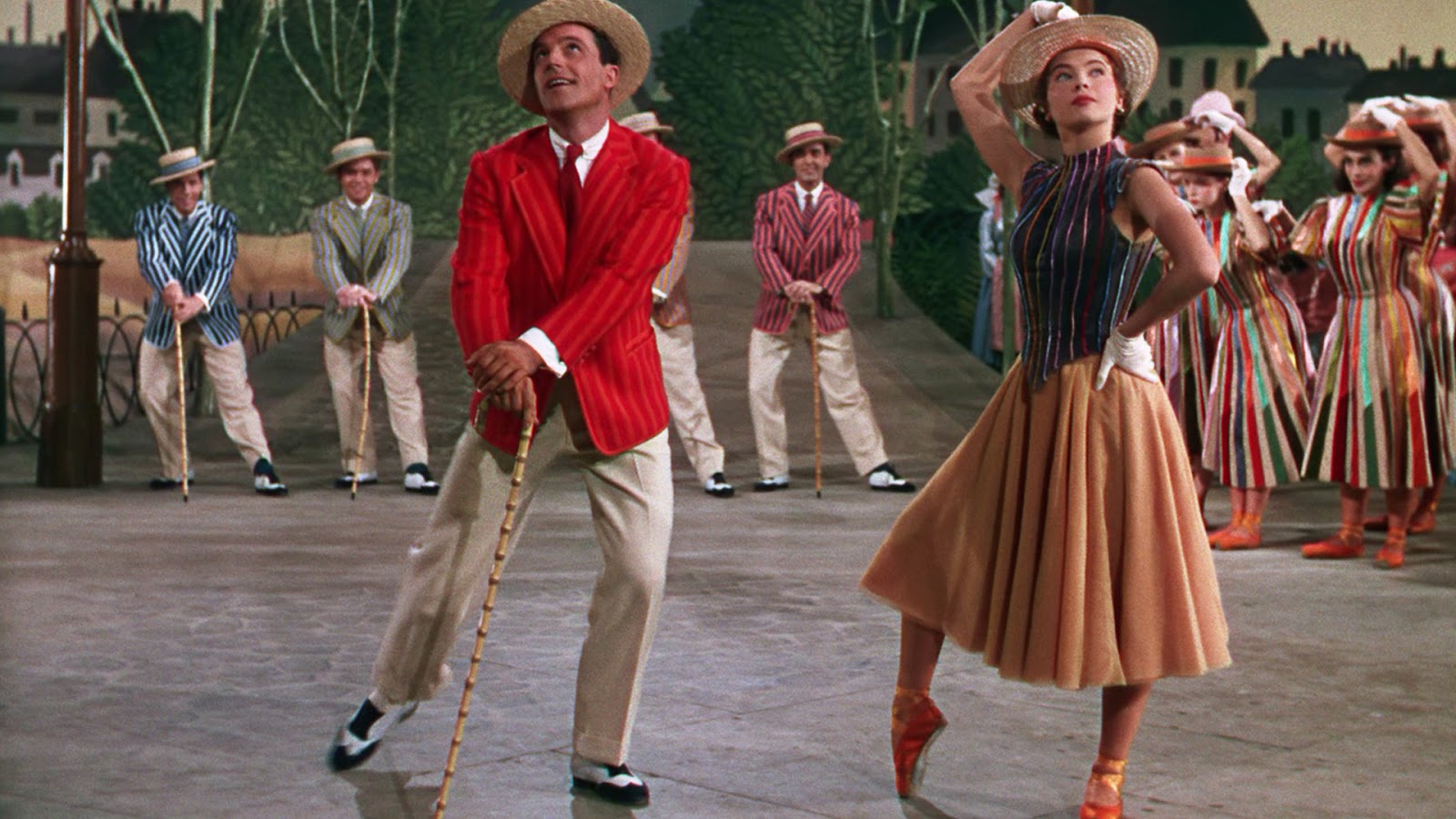
‘This is Paris’. These are the first words Gene Kelly narrates, as the film opens on with montage of the City of Light’s famous monuments. Only it’s a lie. Aside from some exterior shots early on, everything you see on screen was created on MGM sound stages. It’s pure Hollywood magic, completely romanticised and glamorous. And yet you never once doubt the illusion.
Vincente Minnelli really was king of the Hollywood musical, and this is one of his finest. It’s boldly experimental; with its use of elaborate staging and vibrant colours, and its framing of the musical sequences. The camera frequently departs the known world of the story, travels through mirrors, and into dreams, bringing to life spectacular, otherworldly visions of beauty and romance. It’s hard not be swept up in the romance of Minnelli’s Paris. He fills the city with lavish sets, charming comedy and delightful dancing, all scored to the melodies of George and Ira Gershwin.
Gene Kelly embodies the head-in-the-clouds romantic with effortless grace, and when it’s time to dance his intricate footwork is similarly effortless. Leslie Caron shines in her screen debut, a delicate counterbalance to Kelly’s sheer athleticism. Theirs is a sweet romance, if a bit bogged down in dated attitudes. But there’s a cynical undercurrent to their yearnings too, a story of two ‘kept’ people torn between their ambitions in life and their passion for one another. It reminds you of the humanity in amongst all the Hollywood razzle-dazzle, making the story just as engaging emotionally as it is visually.
Honestly though, the film warrants inclusion on this list for its finale alone. The famous 18-minute ballet sequence, scored to Gershwin’s titular 1928 composition, is one of the most momentous, dazzling moments in all musical cinema. After the success Powell and Pressburger found with a similar sequence in their British masterpiece The Red Shoes, Minnelli was able to convince the studio heads at MGM to include something similar here. Directed and choreographed by Kelly, the whole thing is a kaleidoscopic whirlwind of spectacular dancing and colourful sets, inspired by the art history of Paris. It’s a spectacle to take in nowadays, let alone in 1951.
The film was a Best Picture winner at that year’s Academy Awards, a decision often derided by dint of the films it beat (A Streetcar Named Desire, A Place in the Sun). But to appreciate Minnelli’s film now, and to see just how radically different it was from the musicals that preceded it, you can understand why it won.
7. The Sound of Music (1965)
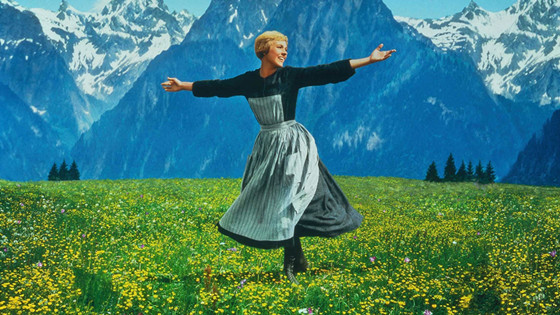
There’s a timeless charm to The Sound of Music that few other films, let alone musicals, can match. A smash hit on release (adjusted for inflation it remains the sixth highest grossing film of all time), that immense popularity has left an indelible mark on pop culture for decades. Most people will recognise the iconic images of Julie Andrews running through the fields or be able to hum along to at least one of the famous musical numbers. Perhaps without even realising where they know it from.
Julie Andrews is the star of the show. Cast before she won over audiences with her signature Oscar-winning performance in Mary Poppins, it was a risk that was paid back in full for director Robert Wise. Maintaining the momentum that Disney’s family film had built up, with The Sound of Music Andrews cemented her place as the top musical star of her day, and arguably the biggest female star the genre had seen since Judy Garland.
Aside from the fact that her voice is incredible, she’s an instantly likeable screen presence; down-to-earth and relatable, but still full of an almost impossible amount of charm and goodwill. It’s clear from the outset that she’ll win over the difficult children and their authoritarian father because, well, how could they not love her? Her moments of happiness are infectious, and her struggles and doubts moving; she faces her problems and grows as a character without relying on heavy sentimentality.
Pair her with the legendary musical duo of Rodgers and Hammerstein, and you’ve got a film that was always going to be a winner. Few musicals have a collection of songs as familiar and catchy, well known even if you’ve never seen the film or stage play before. As well the titular opening tune, it has wonderful tunes like ‘My Favourite Thing’, ‘Do-Re-Mi’, ‘So Long, Goodbye’, ‘Edelweiss’, ‘Maria’, ‘I Have Confidence’ – there’s almost too many to name (even the delightful ‘The Lonely Goatherd’ has amazing staying power). Every musical moment is wonderfully choreographed, excellently shot and edited and bursting with enthusiastic performances. It’s clear to see why this was the musical sensation of its day.
6. Meet Me in St. Louis (1944)
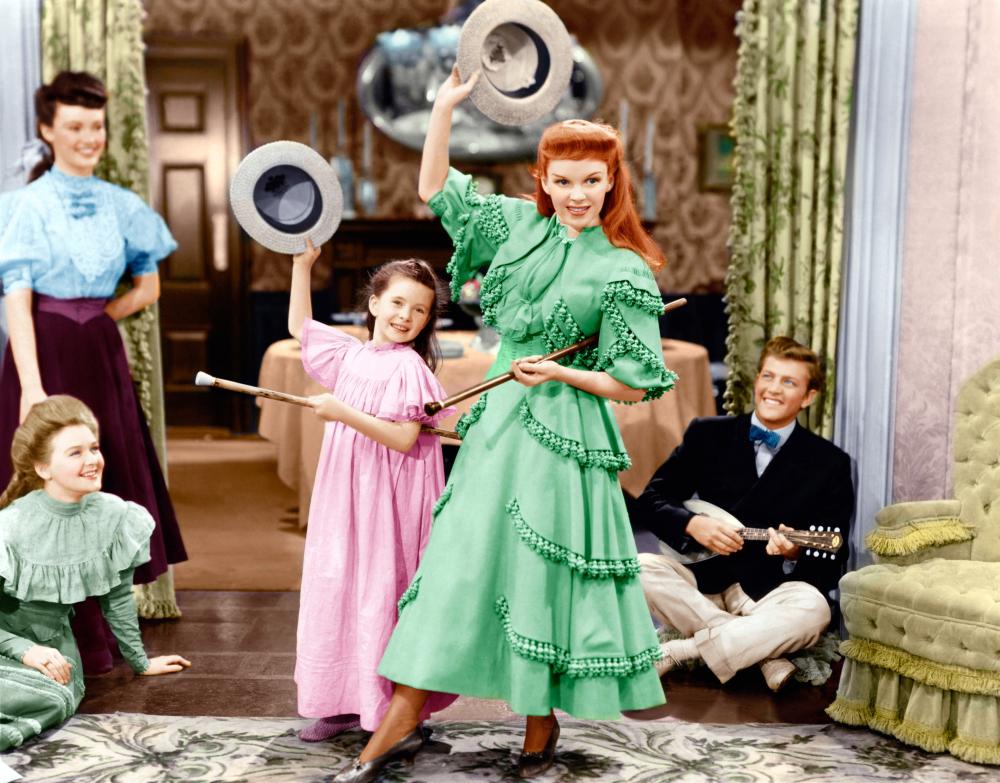
Has any director ever loved their lead actress as much as Vincente Minnelli loved Judy Garland in Meet Me in St. Louis? Not so much in a romantic sense, although they were married shortly after the film’s release, but as a filmmaker. The way he has his star framed, lit, made-up, dressed, choreographed – it was alleged to be the only film of Garland’s where she felt truly beautiful, giving a performance every bit as dazzling as her looks. Minnelli’s grand direction helps to bring her truly vibrant, funny performance to life, filling the film with an infectious joy and holiday spirit. This is probably the best Garland performance there is, and perfectly shows why she was the rising star of her day. It isn’t just that silky smooth singing voice (although what a voice it is); her comic timing is brilliant with the ability to flip seamlessly between emotions.
Compared to the rest of the films on this list, the plot is fairly simplistic. Following the lives of one family over a single year, it paints a touching picture of childhood, growing up and facing life, reminding you of the good times as well as the low moments. Minnelli engineers a domesticity typically reserved for melodramas and ‘women’s pictures’ and infuses it with his charming musical sensibilities. He captures a society on the brink of modernity, celebrating traditional family values whilst aware of the fast-approaching future and the changes it will bring. In its warmest moments it’s a saccharine crowd-pleaser, before the changing of the seasons bring with it a more sombre, melancholy view of family life. It has gained standing as one of the great holiday classics, the kind of film that begs to be seen up on a big screen every Christmas.
The music similarly charts the turbulent emotions of the family. Hugh Martin and Ralph Blane’s famous songs can be quiet and wistful, as in the classic Christmas tune ‘Have Yourself a Merry Little Christmas’ and ‘The Boy Next Door’, or more upbeat and raucous, with the titular ‘Meet Me in St. Louis’ and ‘Skip to My Lou’. And of course, there’s ‘The Trolley Song’, a delightful look at first love played out on trolley-ride through town, and probably Garland’s second most recognisable tune, after the obvious frontrunner. Speaking of which…